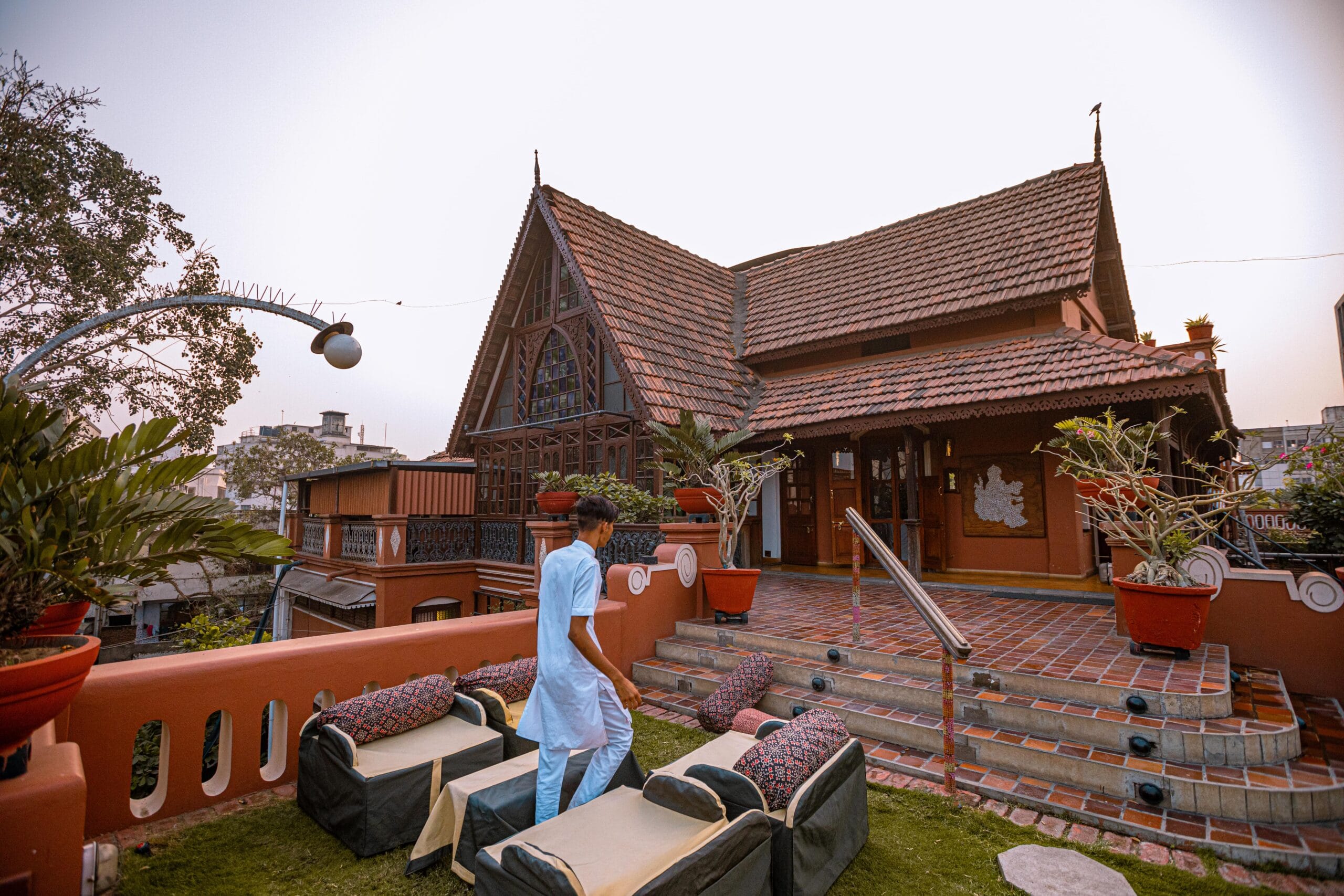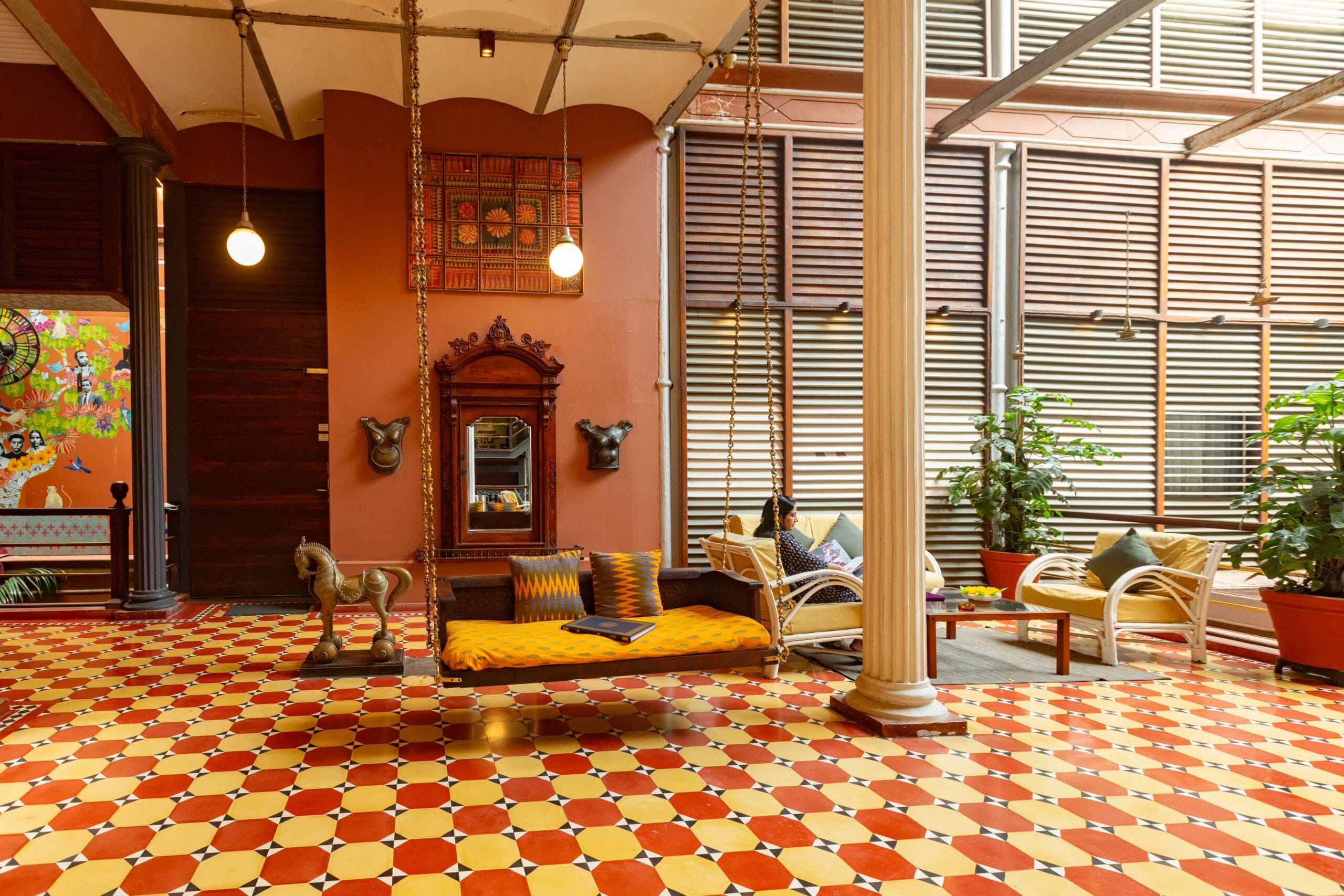Ahmedabad’s walled city is a living canvas of history. Narrow pols with centuries-old wooden homes, stone-carved havelis, stepwells, mosques, and bustling markets still echo with the rhythms of everyday life. Recognised as India’s first UNESCO World Heritage City, this is a place where the past is not preserved behind glass, but alive in the voices of shopkeepers, the scent of street food, and the craftsmanship of traditional artisans.
For travellers wishing to explore this remarkable part of the country, staying within easy reach of the old city makes all the difference. The House of MG Ahmedabad is more than just accommodation; it is an experience in itself. This restored 20th-century mansion incorporates the elegance of a former family home with the ease of modern hospitality, making the perfect base to explore Ahmedabad at a thoughtful pace.
The property’s location is particularly suited to those who want to walk out and be within minutes of the old city’s most iconic landmarks. From here, you can trace the routes once taken by traders, saints, and artisans, and still see the crafts they practised being kept alive today.
The walled city of Ahmedabad is an urban settlement dating back to the 15th century, founded by Sultan Ahmed Shah. Its pols — tightly knit neighbourhoods with internal courtyards — are distinctive for their community-led design, where architecture served both practical needs and cultural traditions. Recognised by UNESCO, these streets invite slow exploration.
Nearby, the Sidi Saiyyed Mosque’s famed jali windows depict the legendary “Tree of Life” motif, which has become an emblem for the city itself. For those with an interest in Jain heritage, the ornate havelis and temples of the Haja Patel ni Pol are equally rewarding.
Markets are another highlight. Manek Chowk, lively from early morning until late at night, shifts character throughout the day — from a vegetable market at dawn, to a jewellery hub in the afternoon, and finally into a street food paradise after sunset.
Returning from a day of exploration, the House of MG Ahmedabad offers comfort without losing the authenticity of its historic setting. Its rooms vary from spacious suites with traditional decor to quieter courtyard-facing spaces. Every corner feels considered, from the use of local textiles in furnishings to the curated photographs documenting the family’s legacy.
While the walled city itself could take days to appreciate fully, House of MG’s central location allows easy access to the rest of Ahmedabad’s cultural landmarks. The Sabarmati Ashram, once home to Mahatma Gandhi, provides insight into India’s independence movement. The Calico Museum of Textiles showcases an extraordinary collection of fabrics spanning centuries, reflecting the city’s deep association with textile production.
Just outside the city, the stepwell at Adalaj is a marvel of engineering and artistry, with its five-storey structure built to store water and provide cool respite in the hot months. These excursions give a broader perspective on the heritage of the state, complementing the intimate streets of the old city.
The old city rewards those who explore it on foot, who pause to listen to the stories of locals, and who appreciate the skill in a hand-carved wooden bracket or a brass water pot polished to a soft glow. With the House of MG as your base, you can experience all of this with ease, knowing that a comfortable, character-filled retreat awaits you at the end of each day.
House of MG bridges the gap between past and present, presenting guests the privilege of living within a piece of Ahmedabad’s history while being ideally placed to explore its UNESCO-designated old city. Whether you are here for a few days or an extended stay, it is a starting point that brings the city’s layered heritage into clear and individual focus.

